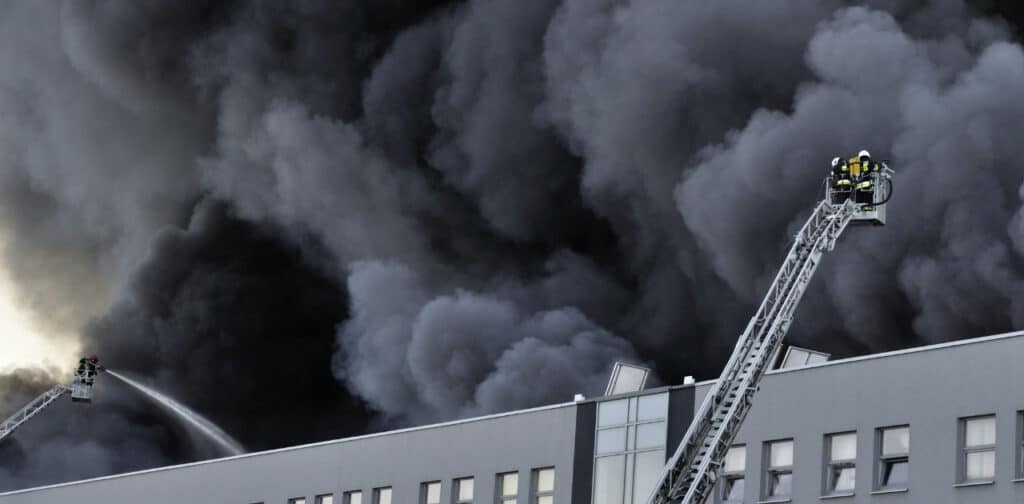For over an hour after the Titanic hit ice and began taking on water, people in the first-class cabins opened the bar and started dancing.
In the morning hours of September 11, 2001, hundreds of people went about their business in a building on fire, even shutting down their computers and grabbing their belongings before leaving their desk.
And invariably, we all know someone who, at the first sign of a tornado warning, immediately walks outside to look around.

Why do so many people do things that seem so irrationally normal during a crisis?
Normalcy bias is a robust and well-documented component of people’s reactions in an emergency. University of Lancaster psychology John Leach estimates about 75% of people will become irrational and incapable of reason during an impending disaster or catastrophe.
About 12-13% of the remainder either become hyperaware or devolve into a confused panic. Some humans can even suffer bradycardia, a process akin to animals playing dead or freezing in hopes the threat will pass.
Normalcy bias explains why a company facing a financial crisis does almost nothing to alter its future. Normalcy bias also explains how a team of otherwise intelligent, reasonable people can sit down at a desk to check email despite a tornado warning right outside their window.
The vast majority of us seek out a sense of routine, calm, and normalcy during a crisis to help us regain a sense of control and that everything will be fine. In truth, it’s stalling at a critical moment.
Your mind’s procedure for processing a crisis
Your brain must process six steps before taking any action on virtually anything:
- Cognition
- Perception
- Comprehension
- Decision
- Implementation
- Movement
These steps take some time, such as being made aware of a threat, perceiving it to be a valid and real threat, thinking about what to do, deciding to carry out the steps, and physically getting into motion.
This series of steps is carried out in drills and exercises so people no longer have to process these steps, saving valuable time. It’s why when a fire alarm goes off, most people don’t stop to wonder what it is, nor do they stop to think about whether it’s a drill or not. They just get up and go.
First responders have written about normalcy bias for nearly forty years. In the 1985 International Journal of Mass Emergencies and Disasters [pdf], sociologists Shunji Mikami and Ken’Ichi Ikeda at the University of Tokyo identified the steps almost everyone goes through during a crisis:
- You’ll interpret the situation in the context you usually expect. “This river rarely floods very high.”
- You’ll underestimate the severity of the situation. A common scenario with tornado warnings.
- You’ll seek out information from someone else around you. “Do you think the water’s moving a little quicker than usual?”
- You’ll try to contact your family, friends, or closest colleagues, depending on the situation.
- Last, you’ll prepare to evacuate or seek shelter.
In other words, you’re more likely to text your friends or family the fire alarm’s going off or the network is melting down than actually protecting yourself.
Overcoming normalcy bias in physical safety and cyber security
Most of us are familiar with fire and tornado drills from school, even if we rarely practice them in our workplaces or homes. That same experience benefits people later from active shooter drills, earthquake drills, and cyber-attack drills.
If your network becomes inundated with malware, ransomware, or other malicious attacks do you trust your IT department to react with a sense of urgency and calm, or will they attempt to make everything seem okay by believing it is?
Likewise, if your building is held hostage by an active shooter, do you trust your colleagues and security team to recognize the sound of gunshots immediately? And if an alarm sounds, do you even know what it sounds like or what to do next?
Normalcy bias helps people reduce anxiety and stress by clinging to what they know. In the moments after the Titanic’s fateful strike on the ice, many passengers were put outside on the decks, but despite seeing some of the lower floors covered in water, most passengers saw an empty bar room and decided to warm up instead of seeking out lifeboats.
For many, seeing everyone else react normally was their downfall. They didn’t act incorrectly because of panic but because normalcy overwhelmed them.
Put drills and safety training to the top of your to-do list
If your facility or business has procedures for drilling, testing, and communicating a crisis or emergency, prepare to test them and your team, helping people help themselves and others.
VPC has 20+ years of experience helping teams of all sizes prepare hazard mitigation plans, disaster response plans, tabletop exercises, evacuation drills, cybersecurity exercises, and response plans and practice for when an emergency occurs.
Contact VPC for training and exercises for any size team, operation, or facility

Rick Ball
Cybersecurity & Continuity of Operations Director
jrball@vantagepointc.com

Troy Jester
President
tjester@vantagepointc.com

Dwight Frost
Vice President & Safety Branch Director
dfrost@vantagepointc.com

















